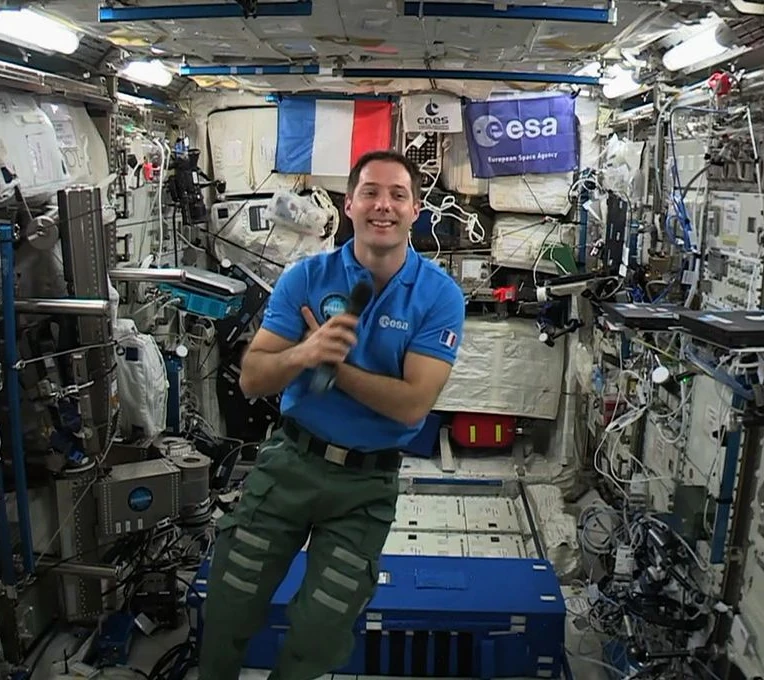
Image description: The International Space Station (ISS) is placed in low Earth orbit, approximately 415 km above the Earth's surface. It orbits the Earth in 90 minutes at a speed of 7.7 km/s or 27,700 km/h. The international crew dedicated to scientific research in the space environment witnesses about 16 sunrises and sunsets each day. The astronauts aboard the International Space Station are in a state of weightlessness but not microgravity. The ISS and the astronauts are in free fall around the Earth. That’s why the astronauts float in the International Space Station.
Before answering the question of why astronauts float in the International Space Station (ISS), we need to clarify some physics terms simply.
Gravity is the force of the gravitational field that pulls us towards the center of the Earth; this term pertains to the planet Earth. It is also the force that gives weight to any physical body (weight).
Gravitation more generally refers to this force or interaction between two massive celestial bodies. But these two terms are identical.
Weightlessness is the almost complete absence of the sensation of weight, unlike gravity.
Microgravity characterizes very weak gravitation experienced by an object located very far from any massive body or in a corner of space where the gravitational influences of several massive bodies cancel each other out, such as at Lagrange points.
Zero gravity or zero G does not exist because gravitation pervades all space up to the large-scale structures of the universe. The experience of "zero gravity" is an illusion that gives the impression that gravity disappears. But in reality, it is the sensation of weight that disappears when one is in free fall. Indeed, if one falls freely in an elevator with its cable cut, both bodies fall at the same speed, and neither rests on the other. If both bodies fall, it is precisely because of gravity.
So what is the physical phenomenon that allows astronauts to float in the International Space Station?
Gravity measures the acceleration of an object in free fall at the Earth's surface.
Newton's Second Law, expressed as F=ma, states that the force of gravity (f) is equal to mass (m) times acceleration (a).
In this equation, a force of 1 newton acting on a mass of 1 kg accelerates at 1 m/s². Thus, the force of gravity is about 9.81 newtons for a mass of 1 kg.
However, gravitation and acceleration are two aspects of the same force (F=ma and F=mg ⇒ g=a).
Gravity is expressed as g0=9.81 m/s², which is the acceleration due to gravity (at sea level at 45° latitude).
Unlike weight, the mass of a body (expressed in kg), which is used in the calculation of gravitational force g, does not change depending on the celestial body where the body is located. It is g that decreases with the square of the distance separating two bodies.
Our International Space Station moves in a low orbit located about 415 km from the Earth's surface. This distance is very small, and the gravity at this altitude (g=9 m/s²) is practically the same as on the Earth's surface (g=9.81 m/s²).
Thus, the astronauts aboard the International Space Station are in a state of weightlessness but not microgravity. The ISS and the astronauts are in free fall around the Earth. That’s why the astronauts float in the International Space Station.
N.B.:
The Earth is a reference for other celestial objects where gravitation is different. Thus, Earth's gravity is equal to 1 concerning other objects, which is why we confuse mass and weight (p=mg).